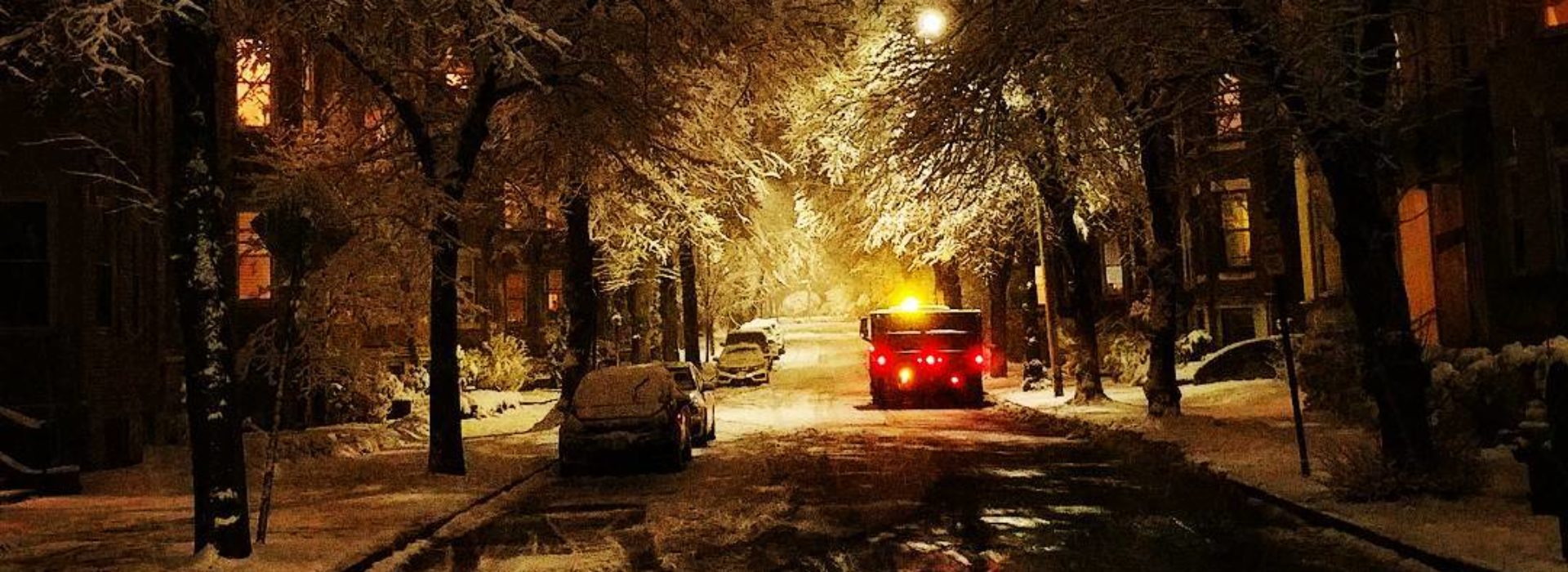
How the Lawn Grew Across America and Why That Needs to Change — Our City Forest
There’s a growing anti-lawn sentiment in the drought-stricken West. Nevada, Arizona, New Mexico and California each have programs in place to pay homeowners to replace lawns with xeriscaping (drought-tolerant landscapes). I’d heard of these programs when I lived in New York. Driving through trackless desert, salt flats and blonde, high-plains I couldn’t help but wonder how we ever thought to impose lawns on these landscapes in the first place.
Where did lawns come from?The Garden of Earthly Delights by Hieronymus Bosch circa 1490: The Garden of Eden has a beautiful lawn.While grass is natural, the lawn is a designed object with deep, historical roots. In the Middle Ages, lawns were a symbol of ostentatious wealth and power. Pasture lands were given over to ornamentation instead of growing food, trimmed short by armies of scythe-wielding peasants (or herd animals).
In the 1700s, lawns were the canvas upon which the English parkland garden was grown and were incorporated into the imposing geometry of, French formal gardens (still maintained by servants with scythes as mowers weren’t invented until 1830). Settlers to the United States brought these ideas with them and incorporated English and French-style lawns into the landscapes of wealthy landowners while middle and lower-class people maintained weedy, scrubby or swept, bare soil in their yards. Intricately shaped and mowed lawns of the Orangerie in the Palace of Versailles.
It wasn’t until the late 1800s that lawns became incorporated into the broader American consciousness. Andrew Jackson Downing, one of the founding fathers of American landscape architecture, promoted lawns in his 1850 treatise The Architecture of Country Houses “When smiling lawns and tasteful cottages begin to embellish a country we know that order and culture are established.”
Downing’s friend and colleague Fredrick Law Olmsted, the architect behind Central Park in New York City, ardent conservationist and “community builder” embraced this principal when commissioned to design one of the first, planned suburban developments. Olmsted’s design called for each home to be set back 30 feet from the road, surrounded by unbroken lawns. Two years later, Frank J. Scott would make the front lawn indispensable to homeowners when he wrote “A smooth, closely shaven surface of grass is by far the most essential element of beauty on the grounds of a suburban home”. Scott applied Olmsted’s principal of “subordination” to the lawn, making the lawn the centerpiece of the front yard.
With the advent of the garden hose, lawn chemicals and better mowers lawns came to dominate later housing developments.Housing developments in the from 40s onward would perpetuate the ideal, suburban lawn as seen here in an ad for a Levittown.
Now lawns are indisputably part of the American psyche. Sumptuous lawns feature prominently in The Great Gatsby as a stand-in for The American Dream. The white picket fence, symbol of American, middle class aspirations, surrounds a house with a nice lawn.
It’s not just aspirational or symbolic but culturally enforced. The nation’s lawns occupy land area the size of Iowa and are maintained through legal, social and economic coercion. In many cities you can be fined, arrested and jailed for failure to maintain your lawn, that is, if your neighbors don’t decide to mow your lawn while you’re not home. A $40 billion industry is built upon lawn chemicals and lawn care, which has environmental and health consequences for residents.
The hold of the lawn is so strong that people in California are painting their lawns green or replacing them with fake grass. All of this has combined to make lawn grass the most irrigated crop in the US.Total lawn surface area of the United States as seen by satellite and aerial photography,.
It’s unfortunate that Downing, Olmsted and Scott’s democratization of the lawn’s aristocratic excess would lead the current state of affairs. Olmsted in particular was an ardent conservationist, partially responsible for the preservation of Yosemite Valley. It is painfully ironic that his lawns would flirt with ecological catastrophe. Roughly 60 million acre-feet of water (or 2 trillion gallons of water) a year are used to maintain lawns. In the summer this can account for 50-75% of a homeowner’s water use. The vast majority of lawns are residential so the water comes from the drinking supply. When you factor fertilizer and chemical use into the equation it becomes worse. Pesticide runoff from lawns poisons local watersheds, killing essential, salmon-feeding aquatic insects and amphibians. They infiltrate ground water and cause health problems in people. Fertilizer contributes to a process called “eutrophication” which makes rivers, ponds and wetlands uninhabitable for many wildlife species by filling it with toxic algae
Source: How the Lawn Grew Across America and Why That Needs to Change — Our City Forest





